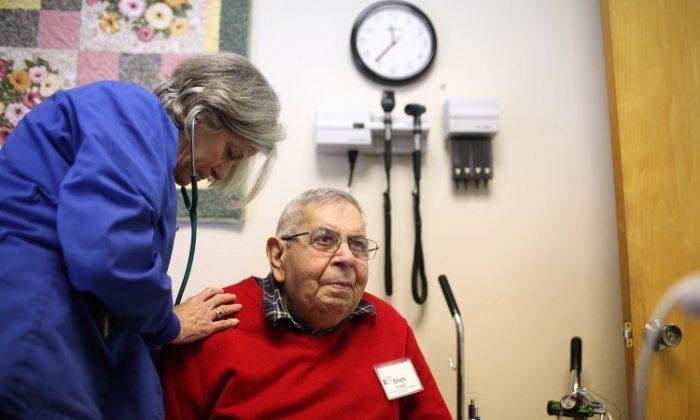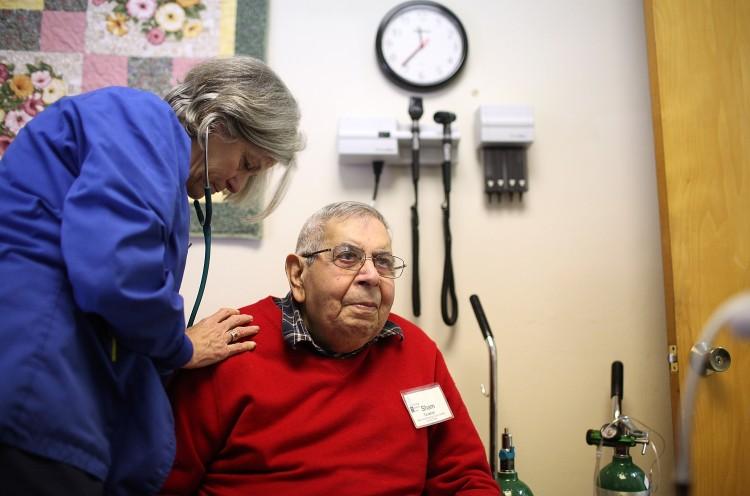As the baby boomer generation ages, the financial pressure on Medicare increases. While Democrats and Republicans agree that a solution is necessary, the parties and their presidential candidates, President Barack Obama and former Governor Mitt Romney, provide very different solutions.
Both campaigns released new ads on Thursday, touting their respective approaches to fixing the assistance program.
The Romney campaign used Sen. Marco Rubio in its piece, titled “Least We Can Do,” promoting the Romney-Ryan plan fix. “Mitt Romney and Paul Ryan get it,” the senator says in the ad. “Medicare’s going broke. That’s not politics, it’s math.”
The Obama campaign released “Preserving,” aimed at swing states like Florida and Colorado. The ad goes after the Romney-Ryan plan, and distinguishes itself from the voucher-private insurer plan of Republicans, describing the president’s approach as “A difference that matters.”
President Obama aims to tackle the Medicare problem by reducing payments to private insurance providers, financially rewarding hospitals that have better outcomes—especially lower rates of readmission—and by increasing health care fraud prosecutions by 75 percent.
Health care fraud has cost taxpayers billions. In May, the federal government’s Medicare Fraud Strike Force charged 107 people for bilking taxpayers out of $452 million in fraudulent billings.
According to the Department of Health and Human Services (HHS), the Justice Department has recovered $4 billion of taxpayer money stolen via Medicare fraud.
Romney proposes to add more variety and choice and make Medicare optional, offering premium support in the form of vouchers to pay for either private insurance or Medicare. The Republican platform is depending on free markets and competition for vouchers to keep health care costs in line.
“With insurers competing against each other to provide the best value to customers, efficiency and quality will improve and costs will decline,” states a description on MittRomney.com. “Seniors will be allowed to keep the savings from less expensive options or choose to pay more for costlier plans.”
Seniors with smaller incomes would get more support than affluent seniors. Premiums and coverage are not tied to income for current Medicare enrollees.
For those over 55, the system would remain the same.
If seniors choose less expensive plans, they can use the difference for out-of-pocket health expenses, according to the Republican platform.
Even retirees who have good coverage from a former employer now go onto Medicare and keep their employer coverage as supplemental insurance. That would not be required in Romney’s proposal.
Romney also proposes to make the eligibility age “more realistic.”
Clarice Dowdle, CEO of Senior Caregiving Today and author of “Time for the Talk: The Ten Step Plan for Effective Senior Caregiving Today,” says the senior population is the largest in the nation’s history, with 10,000 Americans turning 65 every day. “Basically, this election is very important to seniors, more than ever,” she said in a phone interview.
The Democratic Party’s landmark Affordable Care Act (ACA) of 2010 changes Medicare, though the changes are being phased in gradually. ACA requires insurers, including Medicare, to cover preventive screenings 100 percent, with no copay for the patient.
ACA reduced the “Donut Hole” for Medicare prescription coverage. After an individual’s annual prescription costs reached $2,800, he or she had to pay out-of-pocket for the full cost of drugs up to $4,550. A combination of discounts and rebates reduced the impact, and under the ACA the gap is set to close by 2020, when there will no longer be a cap on Medicare prescription coverage.
According to Dowdle, “Romney has said he will repeal Obamacare on day one.” If he does, the Donut Hole will return, and place a heavy burden on some seniors. “My father took 17 pills a day in his final year of life. The cost was exorbitant,” she said.
Preventive screenings, such as mammograms and colonoscopies, will require copays again if ACA is repealed.
Dowdle sees the urgency of containing costs. “Medicare threatens to bankrupt the nation,” she said, adding that seniors want solutions, regardless of party. “They are looking for the government to stop fighting, to get things done, and just move on,” she said.
Additional reporting by Jim Fogarty
The Epoch Times publishes in 35 countries and in 19 languages. Subscribe to our e-newsletter.







